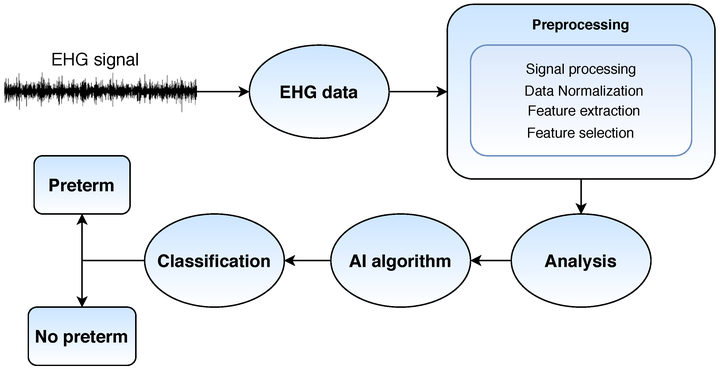Machine Learning Methods for Preterm Birth Prediction: A Review
 An example of the diagram of preterm birth classification workflow. From top-left: raw EHG signal as an entry to quantifier block, preprocessing step serves as a feature extractor, and then ML algorithm being employed to classify preterm labor.
An example of the diagram of preterm birth classification workflow. From top-left: raw EHG signal as an entry to quantifier block, preprocessing step serves as a feature extractor, and then ML algorithm being employed to classify preterm labor.
Abstract
Preterm births affect around 15 million children a year worldwide. Current medical efforts focus on mitigating the effects of prematurity, not on preventing it. Diagnostic methods are based on parent traits and transvaginal ultrasound, during which the length of the cervix is examined. Approximately 30% of preterm births are not correctly predicted due to the complexity of this process and its subjective assessment. Based on recent research, there is hope that machine learning can be a helpful tool to support the diagnosis of preterm births. The objective of this study is to present various machine learning algorithms applied to preterm birth prediction. The wide spectrum of analysed data sets is the advantage of this survey. They range from electrohysterogram signals through electronic health records to transvaginal ultrasounds. Reviews of works on preterm birth already exist; however, this is the first review that includes works that are based on a transvaginal ultrasound examination. In this work, we present a critical appraisal of popular methods that have employed machine learning methods for preterm birth prediction. Moreover, we summarise the most common challenges incurred and discuss their possible application in the future.